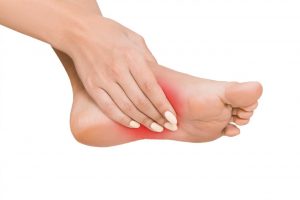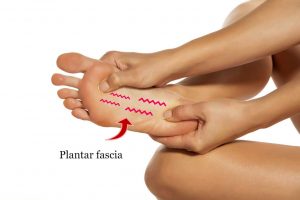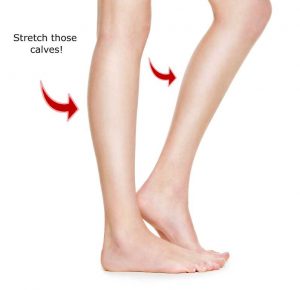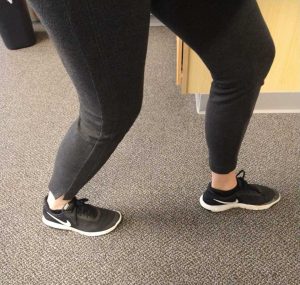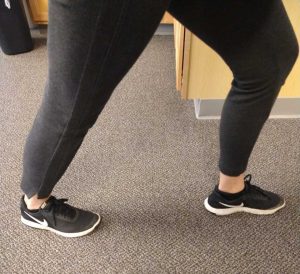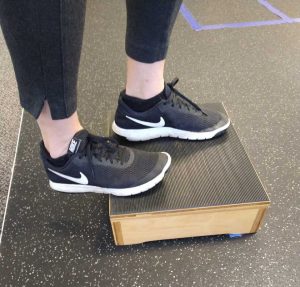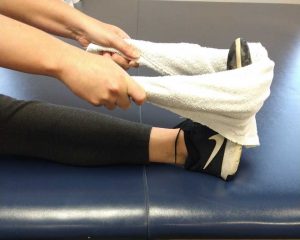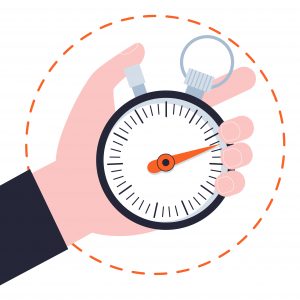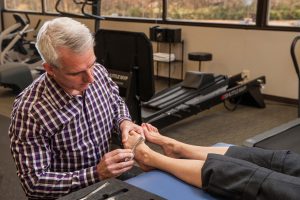
25 Aug Beat Foot Pain in a Snap with These Time-Tested Methods
It can sneak up on you: one morning you wake up and boom! Your heel hurts the second you get out of bed. Maybe it gets a little better as you start moving around for the day…only to hit you again when you leave your desk for lunch.
You think you might have worn the wrong shoes, or maybe it was that hike over the weekend – until your heel pain returns the next morning, and the next, like some sort of zombie pain that won’t die.
Heel pain after waking (or sitting a long time) that gets better with activity is a giant red flag for plantar fasciitis. You may have heard of this before or even have a friend (or two) who have battled PF; it’s really common and can become a frustrating, chronic problem if not addressed.
While misery may not always love company, if you’re part of the plantar fasciitis club you definitely aren’t alone. Millions put up with this foot pain every year! There are gizmos and gadgets, socks and shoes, and all sorts of things designed to help get rid of this painful problem – and it is a problem.
People with plantar fasciitis may have a mild case which doesn’t cause much disruption, or they may have such a painful case that they start limiting their activities and trying not to provoke more pain. So what exactly is this problem and why do some people get it?
The plantar fascia itself is a tough, fibrous band of tissue that connects your heel to your toes; in other words, it’s kind of a big deal! When it gets inflamed, that’s where you get the plantar fasciitis(-itis just indicating inflammation). Inflammation is often involved when your body is working to heal itself, but it also causes pain and irritation that you feel. So why do you end up with this inflammation?
There are different reasons people may end up with plantar fasciitis, like:
- Wearing unsupportive shoes
- Being overweight
- Being a runner – overtraining is a major cause as well
- Foot structure – some people’s build makes them more susceptible to PF
- Tight calf muscles (!!!) – if we’ve said it once… stretch those calves!
So you’re pretty sure you have plantar fasciitis. Maybe this is your second, third, or tenth time dealing with the pain and frustration of daily foot pain. What do you do now?
Here are some ways to treat -or even beat – your plantar fasciitis:
Ice with a frozen water bottle: Roll the arch of your foot with a frozen water bottle. It can help reduce inflammation and it might feel nice on your sore foot, too.
Reduce your activity: You can try reducing your activity while you use conservative at-home methods and see if you notice improvement.
Stretch! Try these specific stretches:
Target those calf muscles with the gastroc/soleus stretch. Use a wall or counter to lean against, and stand with one foot behind you, toes pointed straight ahead. Straighten your knee to stretch the gastroc and bend your knee to stretch your soleus. Try to keep your heel down when stretching your soleus.
Hit the bottom of your foot with this plantar stretch. Put the ball of the affected foot on the edge of a step and let your heel drop off. You’ll feel this stretch in the sole of your foot and even your Achilles tendon.
For this stretch you’ll just need a comfortable place to sit and a rolled up towel. Put the towel around the ball of your foot and pull toward your body.
*Remember: HOLD YOUR STRETCH FOR 20-30 SECONDS! If you stretch for only a few seconds, you don’t create any change in the tissue – so be sure to do it right. Use a timer or count if you need to.*
Physical Therapy: People with a mild case may be able to treat it at home; however, if you’re a frequent flier on the PF express, or if you have a more severe or long-lasting case, it’s time to visit the pros. A PT can help determine the cause of your plantar fasciitis, as well as develop a custom treatment plan to help reduce pain and improve your function. Innovative treatments like Graston Technique, which involves specialized tools being used to restore proper function, can also be useful in treating PF. Providers at Body One see many PF patients (and many of our providers are Graston certified).
The bottom line is that yes, PF is common and if you have it, you want it gone – yesterday. At-home treatment can sometimes help improve symptoms, but for those with severe pain or chronic cases, physical therapy is an important next step in beating your foot pain. You don’t have to wake up every day dreading that first step!
If you’d like more information about how Body One can help your plantar fasciitis, please call one of our three north-Indy locations: North Meridian, Fishers, and Zionsville. We’re both locally owned and operated and our team of expert providers works with patients of all ages and activity levels. We know how frustrating and limiting pain can be and we’re here to help get you on your road to recovery. Call or click today!



